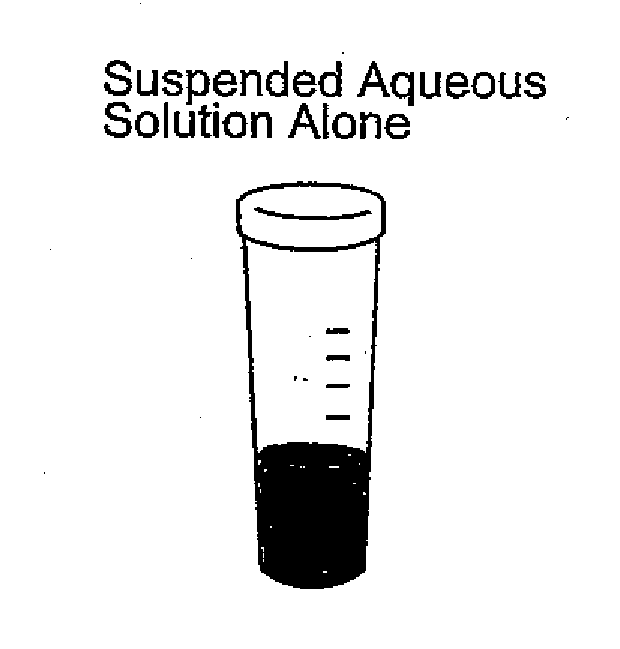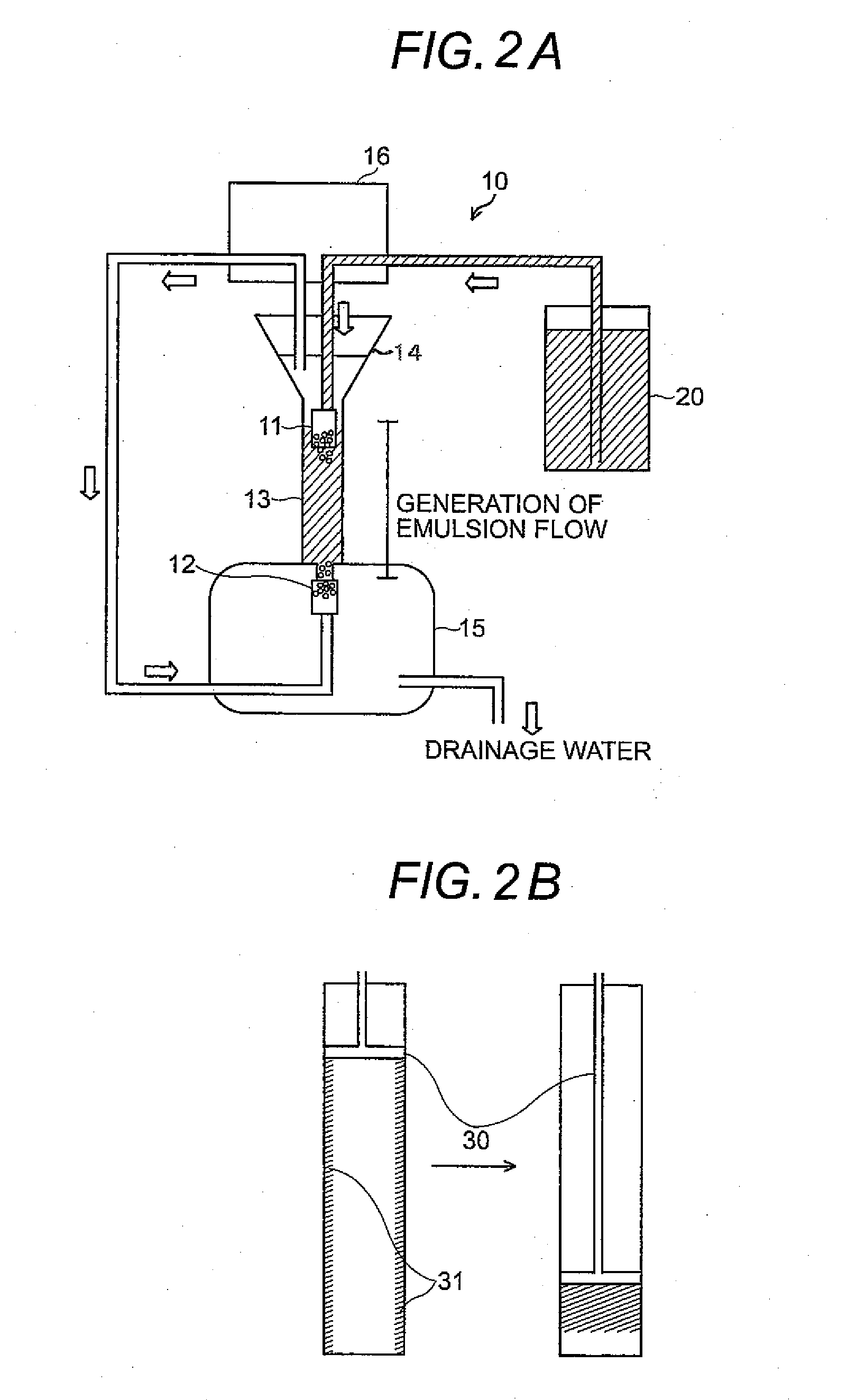Continuous collection method of particle component in aqueous solution and apparatus therefor
a technology of continuous particle component and aqueous solution, which is applied in the direction of solvent extraction, separation process, filtration treatment, etc., can solve the problems of increased running cost, increased maintenance cost, and difficult handling, and achieves more stable operation, finer grain, and stable operation
- Summary
- Abstract
- Description
- Claims
- Application Information
AI Technical Summary
Benefits of technology
Problems solved by technology
Method used
Image
Examples
embodiment 1
Experiment for Collecting Particle Component in Aqueous Solution by Small-sized Apparatus
[0047]Refer to FIG. 3A and FIG. 3B. Using a small-sized emulsion flow apparatus 10a (with the apparatus volume=3 litters and the apparatus weight=2 kg), an experiment for collecting aluminum oxide Al2O3 particles was carried out. More specifically, 20 litters of aqueous nitric acid solution (pH 2) including aluminum oxide Al2O3 particles (with particle diameter between 20 μm and 25 μm) by 0.02 M were prepared and an experiment for collecting the particle component was carried out by using a small-sized emulsion flow apparatus provided with 1 litter of isooctane. FIG. 3A shows a photo picture of the small-sized emulsion flow apparatus used in the experiment. The first head part 11 used in the apparatus has such a structure that the side wall of the hollow cylinder with its one end being closed, being made of polypropylene, is and being provided with 10 holes having 1 mm diameter. The second head ...
embodiment 2
Experiment for Collecting Particle Component in Aqueous Solution by Intermediate-sized Apparatus
[0049]Refer to FIG. 4A. FIG. 4A shows an intermediate-sized emulsion flow apparatus. The term of “Intermediate-sized” apparatus means an apparatus having an apparatus volume three times larger than the apparatus volume used in Embodiment 1. In this experiment, the intermediate-sized emulsion flow apparatus shown in FIG. 4A (with the apparatus volume=9 litters and the apparatus weight=4 kg) was used. The first head part 11 used in the apparatus has such a structure that the side wall of the hollow cylinder with its one end being closed, being made of polypropylene, and being provided with 6 holes having 4.8 mm diameter. The second head part 12 has such a structure that a sintered glass plate having pores with 40 μm diameter bonded onto the end of the hollow cylinder as described above. In order to avoid emulsion mixed phase and supply clean solvent phase, the upper phase separation part 14...
embodiment 3
Experiment for Collecting Simultaneously Particle Component and Dissolved Component in Aqueous Solution
[0053]Dissolved metallic ion and suspended particle component can be selectively and simultaneously collected by adding an extraction agent relevant to the metal ion to such a solvent phase as isooctane; while, in Embodiment 1 and Embodiment 2, pure isooctane is used. In Embodiment 3, an experiment was carried out by using the above described intermediate-sized emulsion flow apparatus provided with 2 litters of isooctane including bis(2-ethylhexyl) phosphoric acid (DEHPA) as the extraction agent by 1×10−3 M and with 200 litters of aqueous nitric acid solution (pH 2) including aluminum oxide Al2O3 particles as the particle component by 0.02 M and ytterbium Yb (trivalent ion) as the dissolved component by 6×10−6 M. As the experimental result, almost 100% of aluminum oxide Al2O3 particles as the particle component and about 98% of ytterbium Yb as the dissolved component could be separ...
PUM
 Login to View More
Login to View More Abstract
Description
Claims
Application Information
 Login to View More
Login to View More - R&D
- Intellectual Property
- Life Sciences
- Materials
- Tech Scout
- Unparalleled Data Quality
- Higher Quality Content
- 60% Fewer Hallucinations
Browse by: Latest US Patents, China's latest patents, Technical Efficacy Thesaurus, Application Domain, Technology Topic, Popular Technical Reports.
© 2025 PatSnap. All rights reserved.Legal|Privacy policy|Modern Slavery Act Transparency Statement|Sitemap|About US| Contact US: help@patsnap.com



